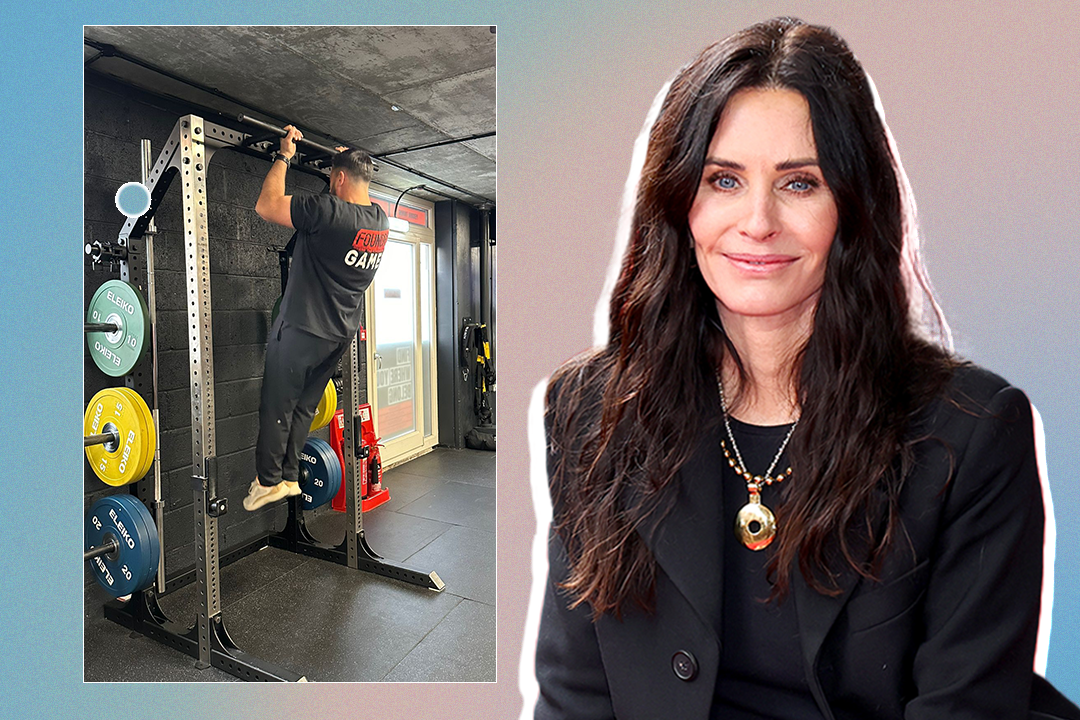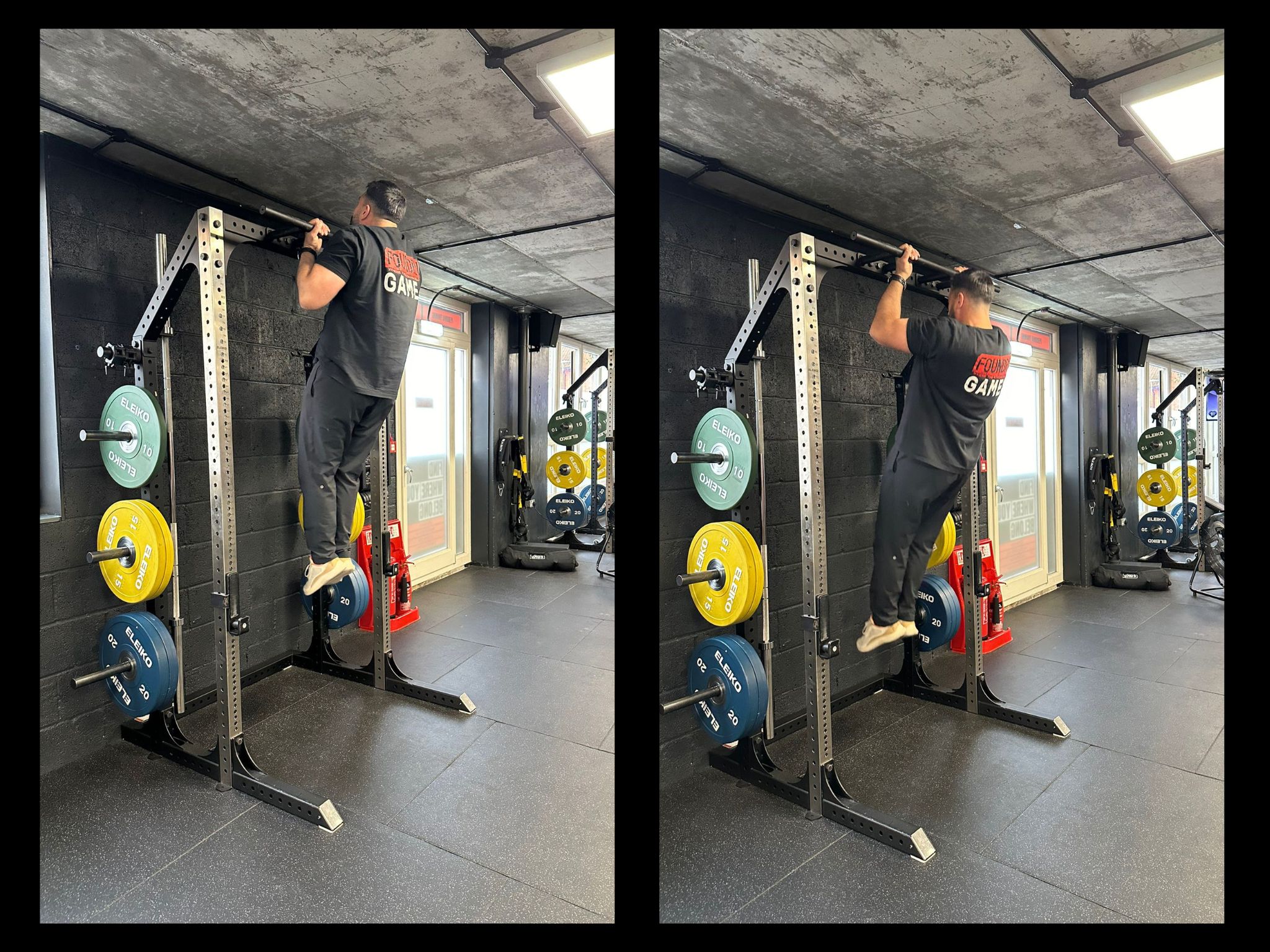The Independent's journalism is supported by our readers. When you purchase through links on our site, we may earn commission.
‘Badass’ Friends star Courteney Cox can do a perfect chin-up at 60 – you can too with these three tips
A coach reveals his top tips for achieving your first chin-up

Your support helps us to tell the story
From reproductive rights to climate change to Big Tech, The Independent is on the ground when the story is developing. Whether it's investigating the financials of Elon Musk's pro-Trump PAC or producing our latest documentary, 'The A Word', which shines a light on the American women fighting for reproductive rights, we know how important it is to parse out the facts from the messaging.
At such a critical moment in US history, we need reporters on the ground. Your donation allows us to keep sending journalists to speak to both sides of the story.
The Independent is trusted by Americans across the entire political spectrum. And unlike many other quality news outlets, we choose not to lock Americans out of our reporting and analysis with paywalls. We believe quality journalism should be available to everyone, paid for by those who can afford it.
Your support makes all the difference.Doing a chin-up is hard, we all know that. But it’s a strength move that you can train to achieve and eventually become a pro at. In fact, Friends star Courteney Cox makes it look easy in a recent Instagram video.
The 60-year-old, who is no stranger to lifting weights, executes the exercise with perfect form, even pausing at the top of the rep to demonstrate an impressive level of strength and control.
“This is so badass,” writes her trainer Ben Bruno, who shared the clip. “I’ve always been a huge Friends fan, so I think it’s so cool that Monica is a low-key savage in the gym.”
To help you follow in Cox’s footsteps, we enlisted the help of Ben Gotting, founder and coach at Foundry gym in London. He’s shared his top tips for achieving your first pull-up or chin-up, and the best exercises for building the strength necessary to nail this tricky exercise. Below, we also explain the differences between the two moves and how you can work up to nailing them at home or in the gym.
What’s the difference between a chin-up and a pull-up?
Both a pull-up and a chin-up involve hanging from a bar and pulling yourself up, but there’s one key deviation between the two moves.
“The difference between a pull-up and a chin-up is purely dictated by your palm position,” says Gotting. “If your palms are facing you, this is called a supinated grip, and it’s what you would use if you were performing a chin-up.”
If your palms are facing away from you, this is called a pronated grip, and it’s what you would use during a pull-up, Gotting adds. You can also use a neutral grip where your palms face each other, with each variation having “a different effect on which muscles predominantly are worked”.
Both exercises are great for strengthening the muscles in your back and biceps. But while the chin-up (demonstrated above by Cox) shifts the emphasis towards your biceps, the pull-up will provide more of a targeted hit to the muscles in your back.
Gotting’s top tips for performing a pull-up or chin-up
Arm yourself
“For most people looking to achieve their first chin-up or pull up, I find the area they struggle with most is initiating the first part of the pull,” says Gotting. One of the best ways to overcome this is to strengthen your biceps, so he recommends adding plenty of biceps curl variations into your training.
Bolster your back
“The next hardest part of the movement, for most people, is the top section of the pull-up, or getting your chin over the bar and your sternum as high as possible,” Gotting explains. “This is typically the result of having under-developed muscles in the upper back, which can be addressed with a variety of different pulling movements [exercises where you’re moving a weight towards you] using different grips [you can find some examples of these below].”
Be patient and consistent
“The reality is, to get better at anything you need to put lots of time into it,” warns Gotting. “You need to get your hands on a pull-up bar a minimum of three times per week to get really good at pull-ups.”
Exercises that will help you get your first pull-up or chin-up
Dead Hang
- Hold a pull-up bar with an overhand grip, placing your hands roughly shoulder-width apart.
- Allow yourself to hang from the bar with your feet off the ground, and hold this position for as long as possible.
- If you can’t do this, use a lower pull-up bar or a barbell in a squat rack and start by keeping your feet on the ground for support. Over time, as your grip strengthens, gradually shift your weight from your feet to your grip to progress the difficulty of the exercise.
Why will this help?
This exercise strengthens your forearms, helping you develop the vice grip needed to pull off a pull-up. Gotting recommends shooting for a goal of two minutes eventually, but once you can comfortably do this for 30-60 seconds you should be ready to try the next exercise on this list.

Eccentric pull-up or chin-up
- Hold a pull-up bar with an overhand grip (if you’re chasing a pull-up) or an underhand grip (if a chin-up is your goal) and place your hands approximately shoulder-width apart.
- Jump or use a box to get into the top position of a pull-up, where your chin is above the bar.
- From here, slowly control your body down to the bottom of the pull-up until you’re in a dead hang position.
Why will this help?
Your body can handle more weight during the eccentric phase of a lift (the lowering portion of the pull-up) than the concentric phase (the upwards phase of the movement). If you can’t do a pull-up yet, this exercise will allow you to strengthen all the relevant muscles while familiarising yourself with the movement pattern. Gotting says to start with a downward phase that lasts between six and 10 seconds, then build this up to 30 seconds over time. Once you can do this, you can further increase the difficulty by attempting multiple repetitions of this exercise back-to-back.
Paused seated cable row
Sets: 3 Reps: 5 Rest: 60 seconds
- Attach a V-handle to a seated cable row machine at a gym then hold it with your palms facing inwards.
- Sit down with your feet against the foot plates, sit up straight and retract your shoulder blades (think about moving them back and down), then drive your elbows backwards to pull the handle to your navel.
- Hold it here for 10 seconds, then slowly control it back to the starting position.
Why will this help?
This is another exercise designed to strengthen the muscles in your back, which are key players in any pulling exercise, including pull-ups and chin-ups. Adding the pause will increase the amount of time your muscles are working for, allowing you to accumulate more training volume per set. Gotting says you can also use this technique with other pulling exercises such as single-arm dumbbell rows to achieve a similar effect.
Close-grip lat pull-down with accentuated reps
Sets: 3 Reps: 5 (on each arm) Rest: 60 seconds
- Sit at a lat pull-down machine with a V-handle attached to it.
- Grip the V-handle with both hands so your palms are facing each other, and set the weight to one that’s roughly 70-80 per cent of your maximum for a standard close-grip lat pulldown.
- Retract your shoulder blades, then pull the handle to your chest with both hands.
- Keeping the handle at your chest, carefully let go with one hand.
- Slowly allow the handle to return to the starting position, using the hand still gripping it to control this movement.
Why will this help?
Like the eccentric pull-up before it, the “overload principle” of accentuated reps relies on your body being able to handle heavier loads during the eccentric portion of a lift. By switching to a single-arm exercise mid-way through the exercise, you can provide an extra challenge for the working muscles in the back and arms.
Gotting says you can also use this technique with other exercises like a dumbbell preacher curl, using a second hand to help you get the dumbbell into the top position then lowering it as slowly as possible with one arm.
Read more: I stopped drinking for six months – five reasons why it’s one of the best things I’ve ever done
How to use these exercises to get your first pull-up or chin-up
The exercises above will strengthen the muscles in your back, biceps and forearms. As luck would have it, these are the very same muscles that will power you to your first pull-up or chin-up.
Strong forearms bolster your grip and allow you to support your body weight while hanging from a bar, while the muscles of the back and biceps work in tandem when pulling your body upwards.
As Gotting says, consistency is key. Try to add a variety of these exercises into your training three times per week, and leave at least 24 hours between workouts where you’re focussing on the back and biceps muscles. This will allow them to recover so you can hit your next session with renewed intensity.
Fuelling yourself effectively is another significant piece of the puzzle. To support your training, you’ll need to eat enough overall calories to provide the energy needed to exercise at your best, while consuming an adequate amount of protein for muscle gain – between 1.6 and 2g/kg is optimal, according to the National Academy of Sports Medicine.
Over time, a marriage of targeted training and an appropriate diet can help you build the strength and skill needed to smash your first pull-up or chin-up. Could it be any simpler? (Sorry, wrong Friends star.)




Join our commenting forum
Join thought-provoking conversations, follow other Independent readers and see their replies
Comments